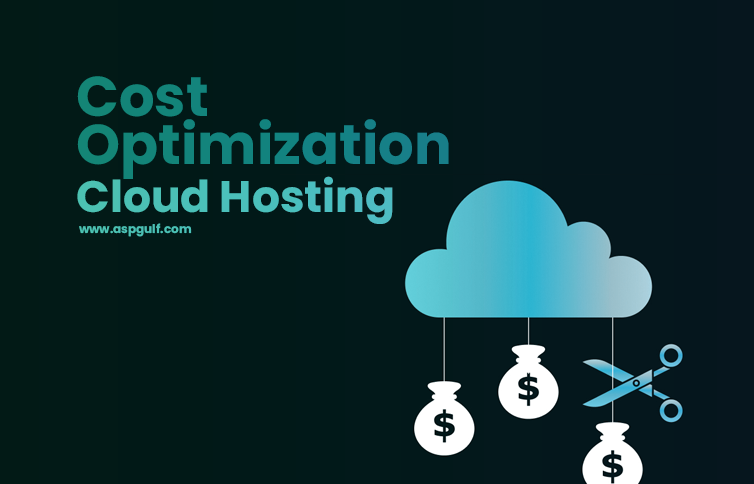In today’s digital-first business landscape, a well-managed network is no longer a “nice-to-have” – it is the backbone of organizational productivity. Whether your business operates through cloud applications, remote teams, digital workflows, or data-driven processes, your network directly impacts how efficiently your employees work.
A fast, secure, and reliable network ensures seamless communication, uninterrupted access to essential tools, and minimal downtime. Meanwhile, a poorly managed network leads to slow systems, frustrated employees, data breaches, and operational bottlenecks that drain both time and money.
To help businesses stay ahead, solutions like Remote Monitoring & Management play a crucial role in maintaining network health, performance, and security.
This blog explores how a well-managed network boosts workplace productivity, why it matters, and what businesses can do to optimize their network for maximum efficiency and we have discussed managed network benefits in detail.

Understanding “Network Management” in the Modern Workplace
Network management refers to the monitoring, optimization, and administration of all systems that help your business stay connected. This includes:
- Internet connections
- Wireless networks
- Routers, switches, and firewalls
- Cloud services
- Servers and data centers
- Connected devices and endpoints
- Bandwidth allocation
- Network security tools
- VPN and remote access systems
A managed network ensures that all these components work cohesively, remain secure, and deliver optimal performance – even under heavy usage.
Why Network Performance Directly Impacts Business Productivity
A modern workplace depends heavily on technology – video meetings, CRM systems, ERP tools, email, file sharing, cloud apps, and collaboration platforms like Teams or Slack. Without a strong network, everything slows down.
Here’s how network performance affects day-to-day productivity:
2.1 Faster Access to Tools and Applications
Employees rely on cloud-based tools such as:
- Office 365
- Google Workspace
- Project management platforms
- Accounting software
- SaaS-based ERPs and CRMs
A well-managed network ensures:
- Fast load times
- Smooth real-time collaboration
- No app-freezing
- Reduced latency and downtime
When tools run smoothly, employees complete tasks faster.
2.2 Improved Communication and Collaboration
Seamless communication is at the heart of productivity.
A well-managed network enables:
- High-quality video conferencing
- Lag-free VoIP calls
- Real-time messaging
- Smooth file transfers
This is especially crucial for remote teams, hybrid workplaces, and multi-office organizations.
2.3 Reduced Downtime and Disruptions
Downtime can cripple a company.
A Gartner report estimates that IT downtime costs an average of $5,600 per minute for large organizations.
A managed network reduces downtime by:
- Identifying failures before they occur
- Providing redundancy and failover systems
- Ensuring proactive maintenance
- Monitoring network health 24/7
With fewer interruptions, employee productivity remains high.

Let Us Manage Your IT
So You Can Focus on Growth
Core Ways a Well-Managed Network Boosts Productivity
Below are the most impactful productivity benefits your business gains through strong network management.
3.1 Enhances Workflow Efficiency
With a well-managed network:
- Apps load faster
- Data transfers happen instantly
- Workflows are uninterrupted
- Automation tools run smoothly
Employees spend more time doing meaningful work – and less time waiting for systems to respond.
3.2 Strengthens Cybersecurity and Protects Workflows
A secure network protects employees and data, creating a stable work environment.
A managed network includes:
- Firewalls
- Endpoint security
- Threat detection
- Identity access controls
- Network traffic monitoring
- Automated security patches
A cyberattack can halt operations for days – or even weeks.
A secured network keeps productivity safe by preventing:
- Malware attacks
- Ransomware infections
- Network intrusions
- Data loss
- Unauthorized access
3.3 Supports Remote and Hybrid Workforces
With remote work becoming standard, employees must connect securely and efficiently from anywhere.
A well-managed network enables:
- Fast VPN connections
- Secure remote access
- Stable video conferencing
- Cloud application uptime
- Consistent device performance
This ensures remote employees remain just as productive as those in the office.
3.4 Prioritizes Critical Business Applications (QoS)
Quality of Service (QoS) allows businesses to assign priority to essential applications such as:
- CRM systems
- Sales platforms
- VoIP calls
- Video conferencing
- Cloud apps used by multiple departments
This prevents bandwidth-heavy but less important traffic (like large downloads or streaming) from affecting productivity.
3.5 Reduces IT Workload and Support Requests
A poorly managed network creates endless IT issues:
- “The internet is slow.”
- “The app is not loading.”
- “The system keeps disconnecting.”
- “The server is down again.”
A well-managed network reduces support tickets by preventing problems before they arise.
This allows IT teams to focus on innovation, strategy, and long-term improvements, rather than troubleshooting daily issues.
Key Components of a Well-Managed Network
To fully boost productivity, a network must be:
4.1 Reliable
- High uptime
- Stable connections
- Redundant systems
- Failover and backup links
4.2 Secure
- Real-time threat detection
- Multi-layer security controls
- Strong authentication
- Regular updates and patches
4.3 Optimized
- Bandwidth management
- Traffic prioritization
- Device management
- Resource allocation
4.4 Scalable
- Ability to support business growth
- Seamless addition of new users, tools, and locations
4.5 Monitored 24/7
Constant monitoring identifies:
- Latency spikes
- Unauthorized access attempts
- Hardware failure warnings
- Traffic anomalies
- Overloaded devices
Proactive action = uninterrupted productivity.
Real-World Examples: How Network Management Improves Productivity
Example 1: Faster Cloud Access
A marketing team uses cloud-based tools for file sharing and design collaboration.
With optimized bandwidth and QoS, large files sync faster, and collaboration happens smoothly – saving hours per project.
Example 2: Reduced Downtime for Sales Teams
A sales department relies on CRM software to manage leads.
If the network is unstable, CRM downtime leads to missed opportunities.
With proactive network management, uptime remains consistent, enabling salespeople to focus on closing deals.
Example 3: Secure Remote Work
A hybrid company experiences security breaches due to weak VPN access.
After implementing identity and access management, endpoint security, and a managed firewall, productivity increases and cyber risks drop dramatically.
Example 4: IT Team Efficiency
An overstressed IT team spends 80% of its time on troubleshooting.
With automation, monitoring, and managed support, they shift their focus to digital transformation projects – improving company-wide performance.
How to Optimize Your Business Network for Maximum Productivity
To boost workplace productivity, businesses should implement the following:
6.1 Conduct a Network Assessment
Identify:
- Bottlenecks
- Latency issues
- Security vulnerabilities
- Aging hardware
- Application performance problems
This becomes the roadmap for improvements.
6.2 Upgrade Outdated Network Hardware
Old switches, routers, and access points slow everything down.
Upgrades ensure:
- Better speeds
- Improved coverage
- More device capacity
- Enhanced security
6.3 Implement Network Monitoring Tools
Continuous monitoring helps detect:
- Bandwidth spikes
- Intrusions
- Hardware malfunctions
- Slow applications
This allows corrective action – before employees are affected.
6.4 Strengthen Network Security
Network Security and productivity go hand in hand.
Implement:
- Firewalls
- Endpoint security
- Regular patching
- IAM solutions
- Threat detection tools
A secure network keeps workflows stable.
6.5 Optimize Bandwidth Allocation
Use QoS to prioritize:
- VoIP
- Video meetings
- Cloud apps
- Business-critical tools
Your network should serve your most important tasks first.
6.6 Use a Managed IT Services Provider
The easiest and most effective way to maintain a high-performance network is through a Managed IT Services Provider (MSP).
An MSP provides:
- 24/7 network monitoring
- Proactive maintenance
- Cybersecurity
- Backup and failover
- Performance optimization
- Hardware lifecycle management
- On-site and remote support
This ensures your network – and your productivity – never slows down.

Let Us Manage Your IT
So You Can Focus on Growth
The Bottom Line: A Well-Managed Network Is a Productivity Powerhouse
Your network is the foundation of your digital workplace. When it is fast, secure, and well-managed, employees work with confidence, tools run smoothly, communication flows better, and downtime is minimized.
A strong, optimized network doesn’t just make IT better – it amplifies overall productivity, efficiency, and competitiveness. Businesses that invest in modern network management experience clear managed network benefits and long-term managed network advantages that directly impact performance and growth.
Businesses that invest in proper network management gain:
- Higher employee output
- Faster workflows
- Stronger security
- Better collaboration
- Reduced IT costs
- Greater customer satisfaction
In a world where technology drives business success, a well-managed network is not optional – it is essential.



